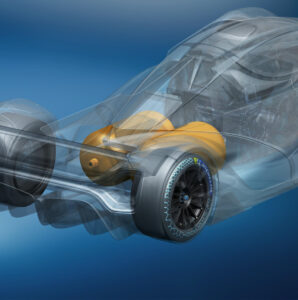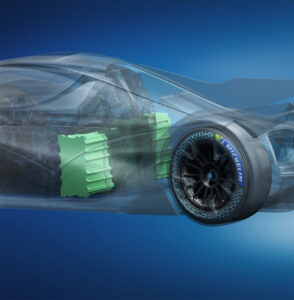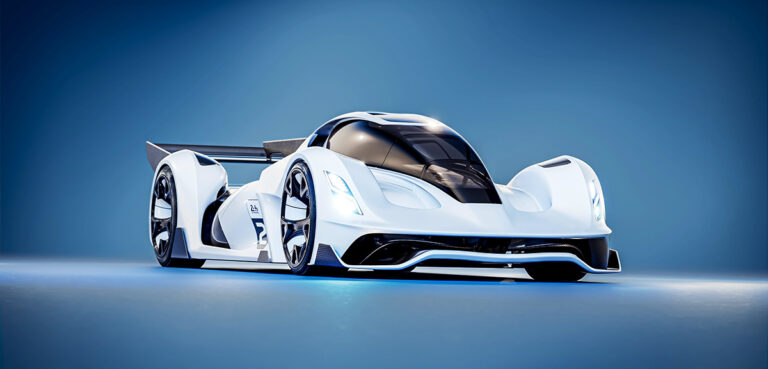The ACO has released details of the next iteration of the MissionH24 prototype, as part of its ongoing quest to run an FCEV class at the Le Mans 24 Hours in 2026. To date, a LMP3 based prototype has been competing in select Michelin Le Mans Cup races.
The new prototype will be equipped with fuel cell supplier Symbio’s next generation of fuel cell, which uses multiple stacks, and it is stated that the power density will be 50% greater than the current version, delivering an output of 300kW.
Plastic Omnium, which is also partnering with the ACO, has developed the H2 storage systems and contributed to their development and installation in the vehicle. The two tanks can store a total of 7.8kg (3.9kg x 2) of hydrogen at 700 bar of pressure, with a total installed weight of around 100kg. This fuel load should provide a running time between refuels of 25-30 minutes.
The car will be able to refuel using the infrastructure planned for the H2 class at the Le Mans 24 Hours, which is being developed in conjunction with TotalEnergies. A buffer battery system will also be used, with a maximum output of 400kW, which can be used in combination with the fuel cell and also enables regenerative braking.
The fuel cell and battery will feed a single electric motor with a peak output of 650kW will drive the rear wheels (the current car uses two motors) and the ACO has stated a power density of 20kW/kg, with a total weight of 30kg. Drive will be delivered through a single speed reduction transmission with a mechanical LSD.
According to the ACO, the target pace for the car (which will weight 1,300kg) should place it at the front of the GT field and the first circuit tests are scheduled for early 2025.





